This article dives into answering the question: “how do you feed round bales to horses?” There’s a bit of nuance to it all, so stay with us!
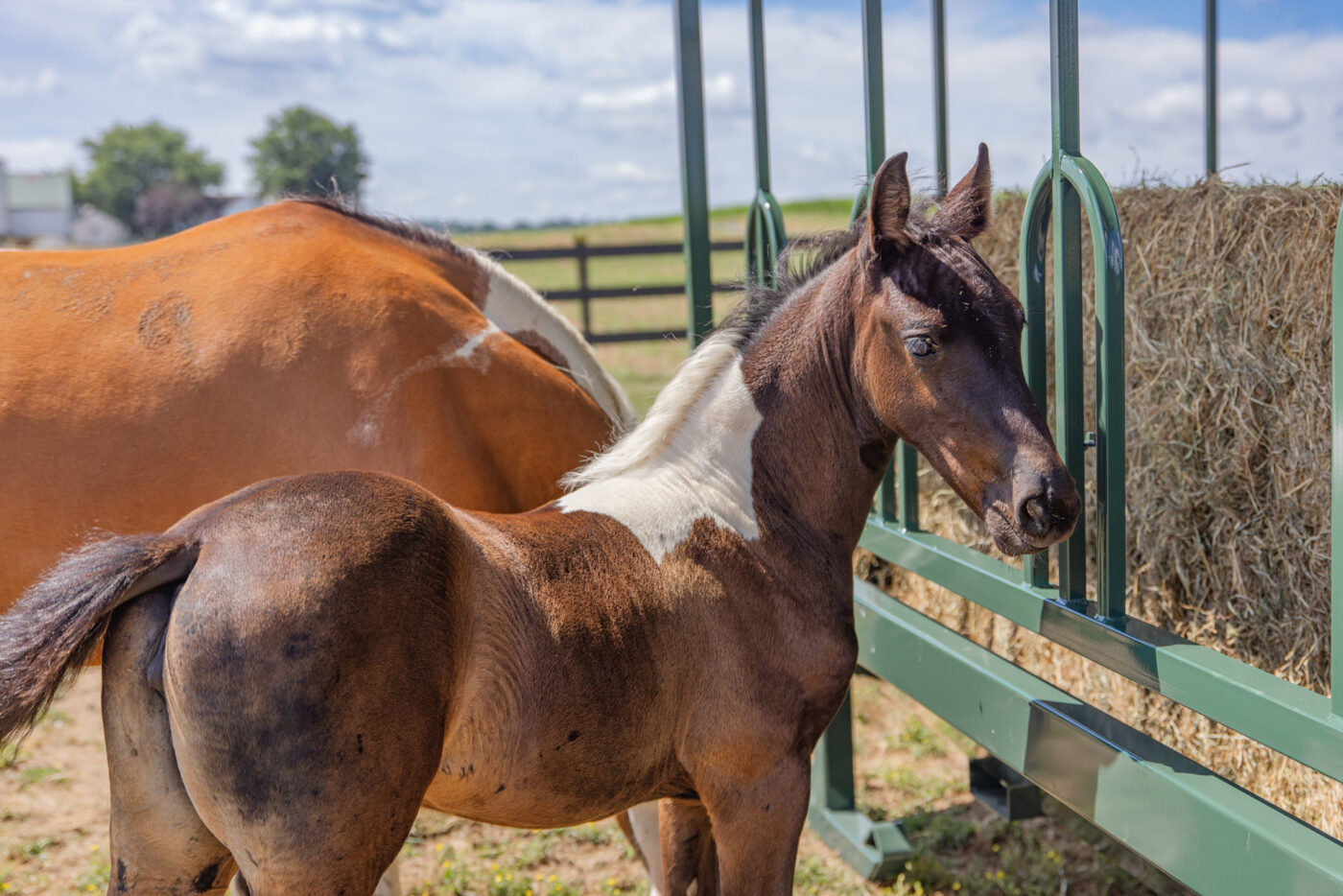
How do you Feed Round Bales of Hay to Horses?
There are several different ways to feed round bales to horses:
- Stalls
- Pasture
- Hay Rings
- Hay Nets
- Wooden Feeder
- Slow Feeder
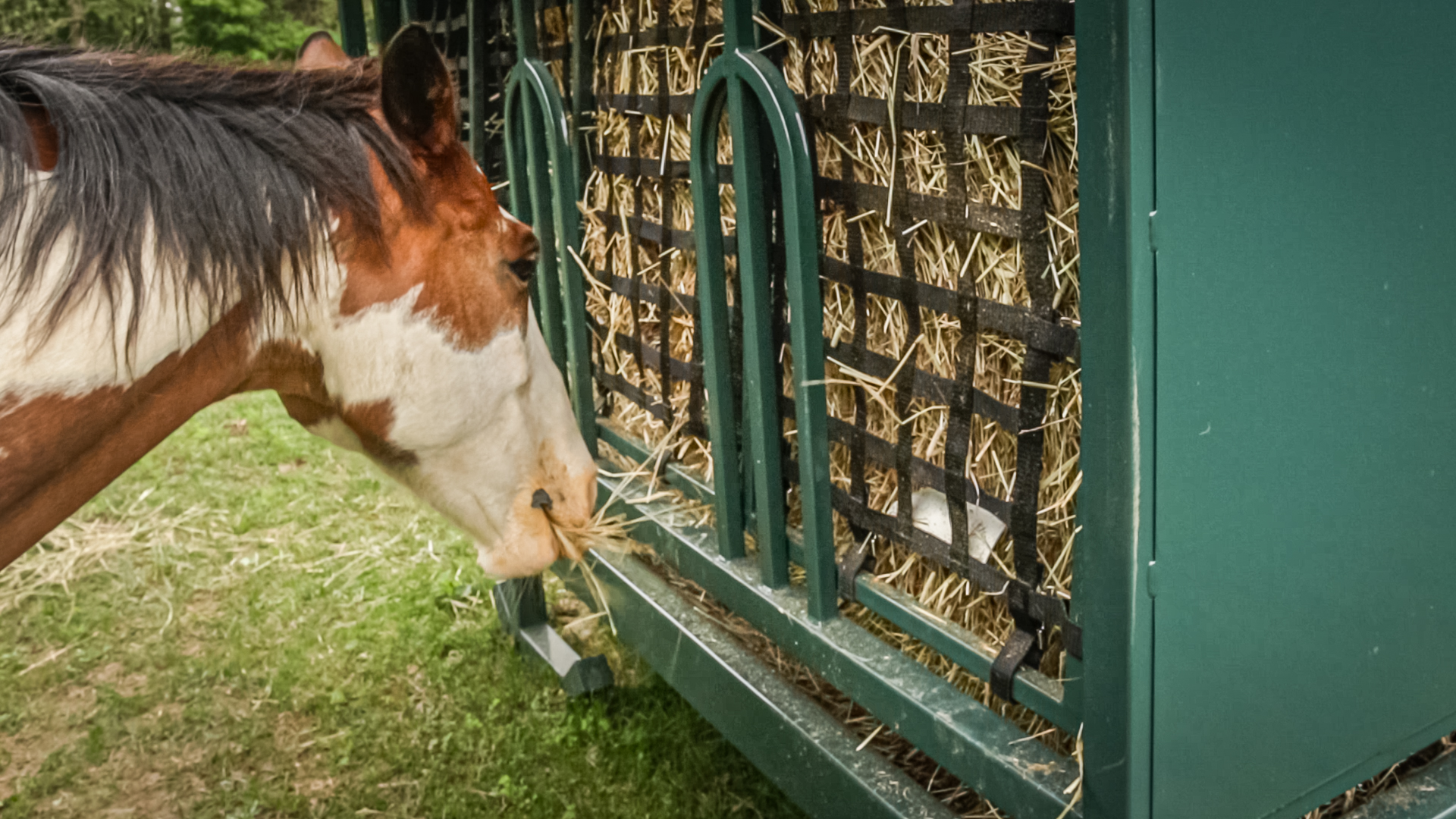
Stalls
Maybe you don’t want the clutter of a large hay feeder in your barn, so you opt for a smaller container for a stall. Keep in mind that this will become more time consuming since you will have to daily ensure that your horse has enough hay.
Pasture
One of the simplest feeding methods is to plop a round bale onto a pasture and allow your horses to continue grazing. However, proceed with caution. If you feed an entire round bale to horses on a pasture, they may overeat considerably. Additionally, hay will be wasted in excessive amounts because of a lack of protection and horses free-range over the hay. Therefore, if you choose the pasture approach, it is best to add a barrier (i.e. hay ring or slow feeder) between the hay and your horses.
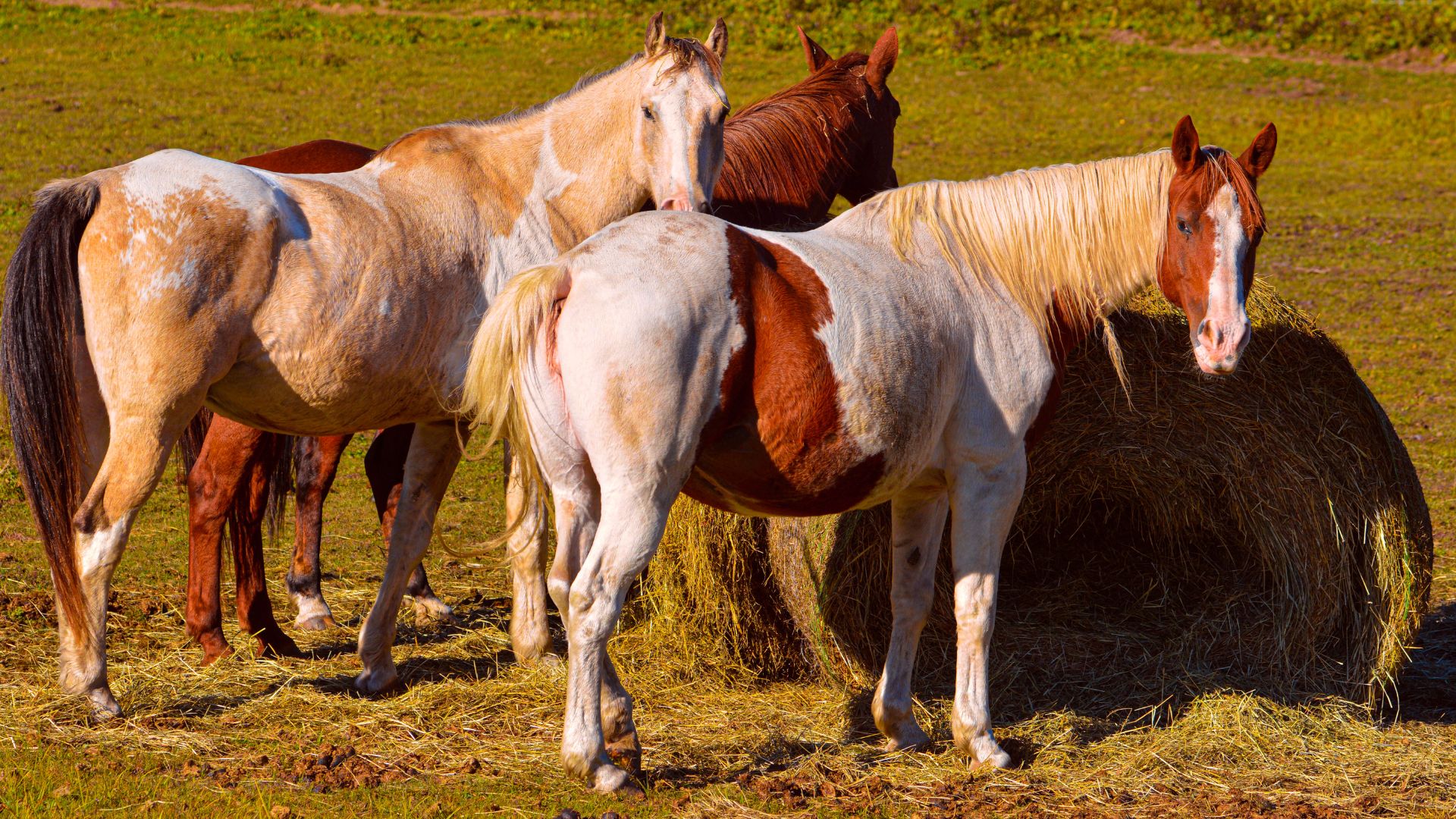
Hay Rings
Looking for another way to feed your horses an entire round bale of hay? With a hay ring, hay will stay contained in one place which will continue to reduce waste, while still allowing your horse to easily graze on needed nutrients.
On the flip-side, hay rings do not adequately protect a round bale from inclement weather. Thus, you may consider adding a roof to keep mold and must away from your horses’ hay.
Hay Nets
Hay nets keep a round bale contained without horses trampling over the hay bale. An entire round hay bale can be placed within a hay net and attached to a sturdy frame or placed in a hay ring. Alternatively, you may also place a hay net on a wooden pallet in order to protect it from moisture on the ground. A hay net slows down horses eating and cuts down on hay waste. When considered the proper hay net for your horses, keep in mind a hole size that allows your horses to eat properly.
However, there are a few downsides to hay nets. One, they don’t provide adequate protection from moisture. Two, a hay net poses a risk to horse safety. A horse could potentially get a hoof caught in the netting. Third, if a round hay bale collapses within a hay net, it’s essentially ground feeding then, and horses may waste a lot of hay by trampling it or with their urine and manure.

Wooden Feeder
If you want to cut down costs, you can always construct your own wooden feeder. In order to fit a round hay bale, ensure the dimensions are larger than the size of round hay bales you order, but also snug enough so that your hay bale won’t move around too much. With an added roof, you can give some protection from the elements. A wooden feeder can eliminate potential waste from horse urine and manure. One pro is that DIY wooden feeders are a very cost-efficient solution, compared to brand-new metal hay feeders. But, building a feeder takes time, and, as a farmer, time is often limited.
Keep in mind that wooden feeders do pose possible risks to horses through sharp edges or splinters. Ensure you regularly monitor and inspect your wooden feeder for any damages.
HF Series Slow Feeder
Wanting to cut down on hay wastage and mold, while also ensuring your horses eat healthy amounts of hay? A slow feeder keeps your hay covered from the elements and allows for drainage of any water that slips through. It also allows your horse 24/7 access to hay, simulating natural grazing habits. In order to protect your horse from overeating, a net panel allows your horse to eat the recommended 1.5 pounds of hay each hour.
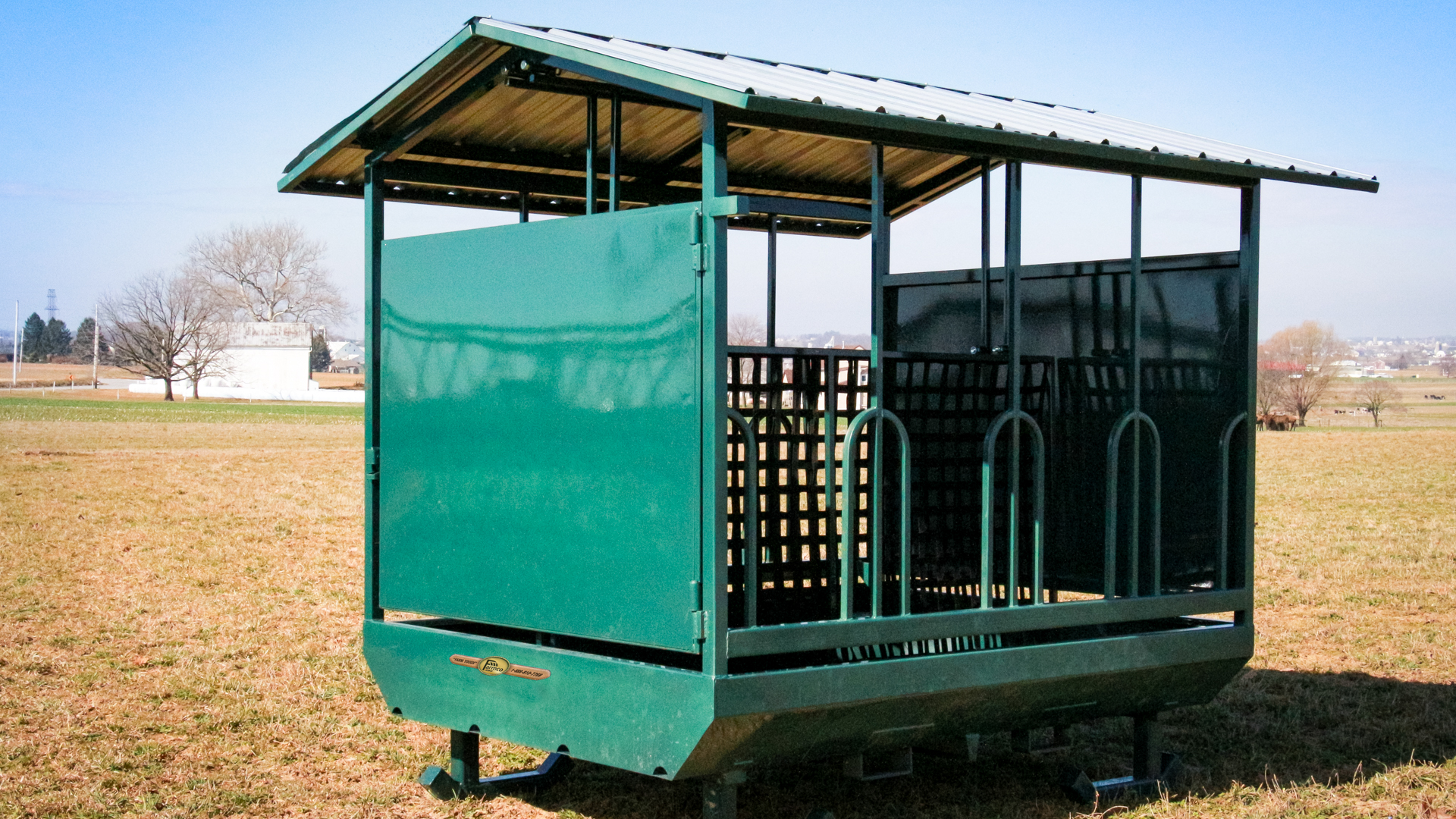
How to Feed Round Bales with Minimal Waste?
A raised horse feeder is the best way to feed round bales of hay to your horses with minimal waste. While we can’t speak for other companies’ horse feeders, our HF Series horse slow feeder has the following benefits, making it the best way to feed round bales with minimal waste:
- Typically pays itself off in hay savings in 24 months.
- Sturdily constructed from 12-gauge metal.
- “Slow feed” net reduces hay consumption and produces horse health.
- Has fork pockets and a welded D-ring for easy transport.
- Much more!
Do You Feed Round Bales to Horses on the Side or End?
Overall, when you plan to set a round bale in the pasture or barn, there are more benefits to feeding hay to horses on the rounded side. However, generally, it’s not best practice to ground feed hay to your horses. Try reading this article if you’re interested in learning more on why ground feeding is not a good solution.
Feeding Hay From the Rounded Side of a Round Bale
Pros
- Reduced Hay Waste. It’s less likely that horses will trample the round bale, ensuring each bale stays clean for consumption.
- Ease of Access. The top and sides of the bale are easy to access for horses which enables multiple horses to feed at the same time.
- Effective Grazing Position: When a rounded bale is set on the side, horses are able to eat hay from both the ends and the sides.
Cons
- Difficult Initial Placement. Round bales are heavy and it can be difficult to move a bale on its side for horses. Additional equipment such as skid loaders or bale unrollers may be needed.
- Less Protection from Moisture: The rounded side absorbs more water than the end of a round bale, which leads to potential mold issues.
Feeding Hay From the End of a Rounded Bale
Pros
- Simplicity. Setting a round bale on its side is ultimately more simple and easy to manage.
- Less Moisture Build Up. Because the end provides better drainage, it is less likely that your rounded bale will become moldy or spoiled by rain or snow.
Cons
- Increased Hay Wastage. When placed on the end, horses may trample hay bales and waste hay during the process
- Less Effective Grazing Position. This position may frustrate horses since it isn’t aligned with the natural process of grazing.
| Particular Side | Pros | Cons |
| Rounded Side | Less hay waste by horses; easy feeding for horses; efficient grazing for horses | Hard to move; less efficient drainage from moisture |
| Flat End | Easier to move; better drainage from the elements | Horses may waste hay more; less efficient grazing for horses |
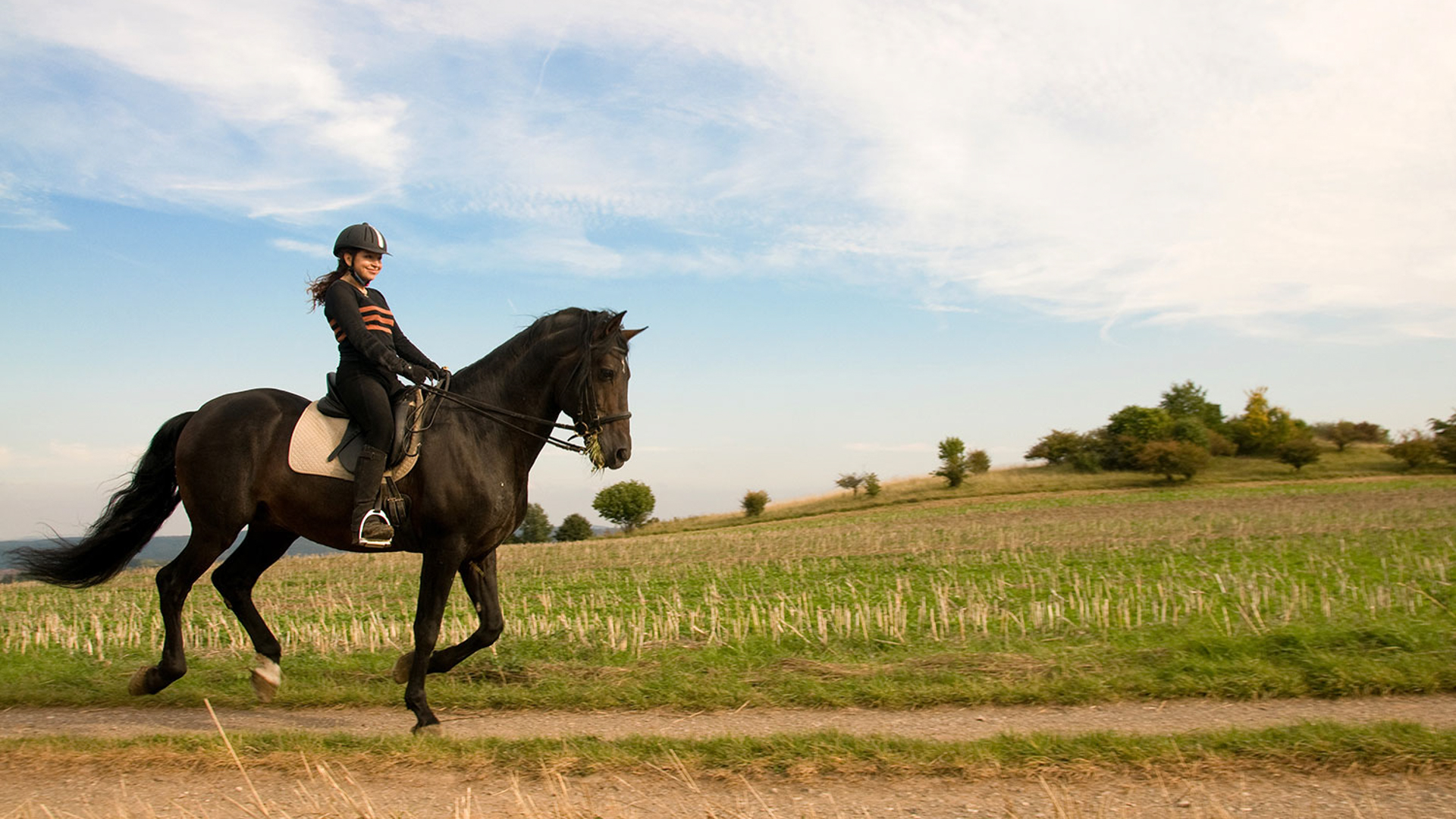
How Many Round Bales Will a Horse Eat?
An 1,100 pound horse will go through roughly 16.5-27.5 lbs. of hay every day.
It’s recommended that horses eat around 1.5-2.5% of their body weight in pounds of hay each day. Now here’s a couple rough statistics on how long it takes for 1 horse to go through a large round bale. Keep in mind that hay waste is also factored into the equation.
| Number of Horses | Days to Finish a Large Round Bale |
| 1 Horse | ≈12-16 days |
| 2 Horses | ≈6-8 days |
| 3 Horses | ≈5-7 days |
| 4 Horses | ≈3-4 days |
However, when using a hay feeder such as the HF slow feeder, you will dramatically eliminate waste and lower the amount of round bales you purchase for your horses. Typically, the HF series slow hay feeder pays for itself with hay savings, usually within 24 months.

How To Feed Large Round Bales To Horses: Step-by-Step Guide
While we can’t speak for other horse feeder providers in the market, here’s a step-by-step guide on how to feed hay to horses with our HF series slow feeder.
- Unlatch the gate.
- Open the gate to the slow feeder.
- Position the net panels against the slow feeder sides.
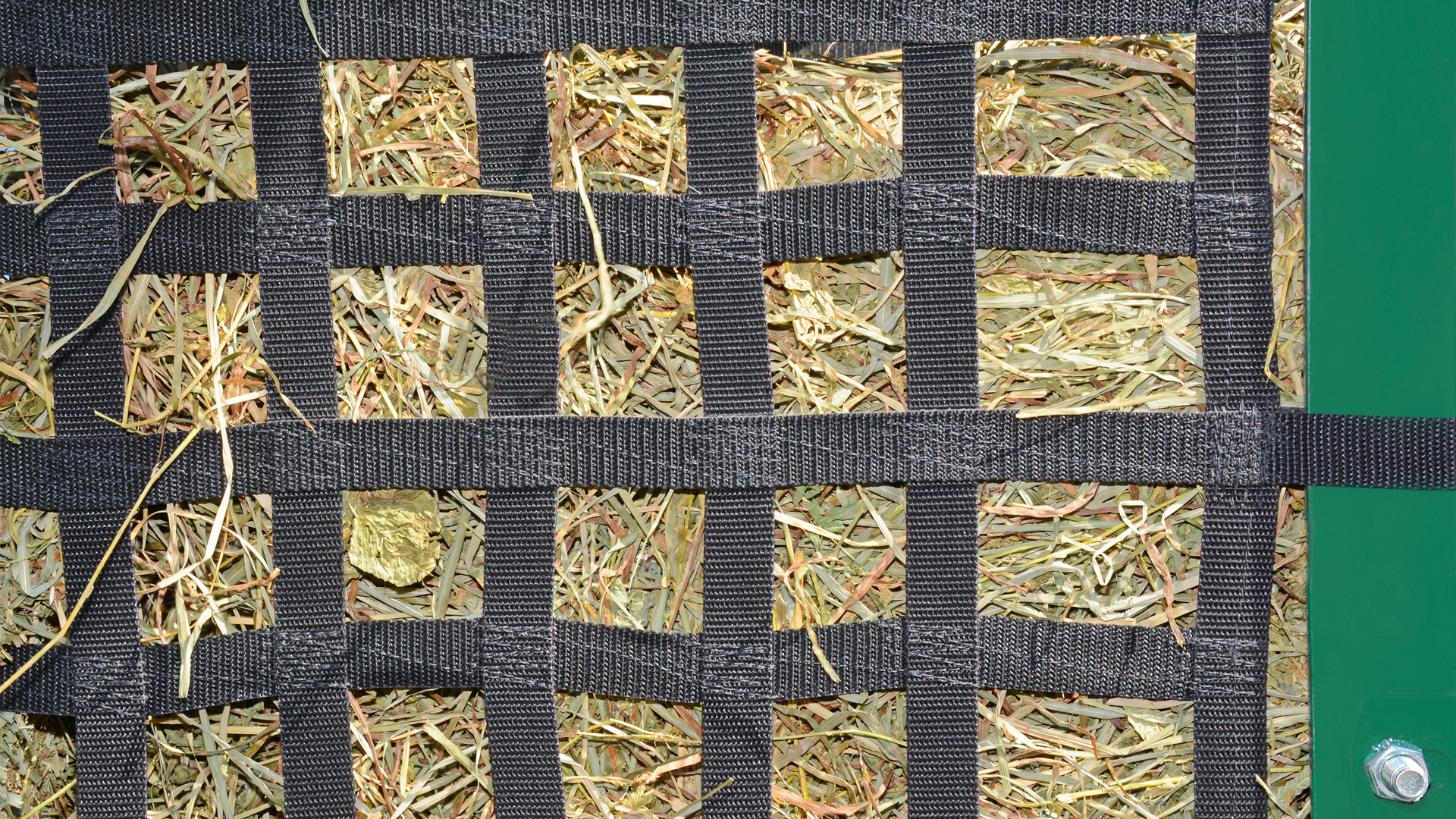
- Use a skid loader to load a round bale in the slow feeder. Or, drive a truck close to the slow feeder and push the rounded bale inside.
- Place the net panels directly in front of the round hay bale.
- Close the gate.
- Make sure the horse-proof latch is in place.
- To move the slow feeder to another part of the pasture, use either the welded D-ring or fork pockets.
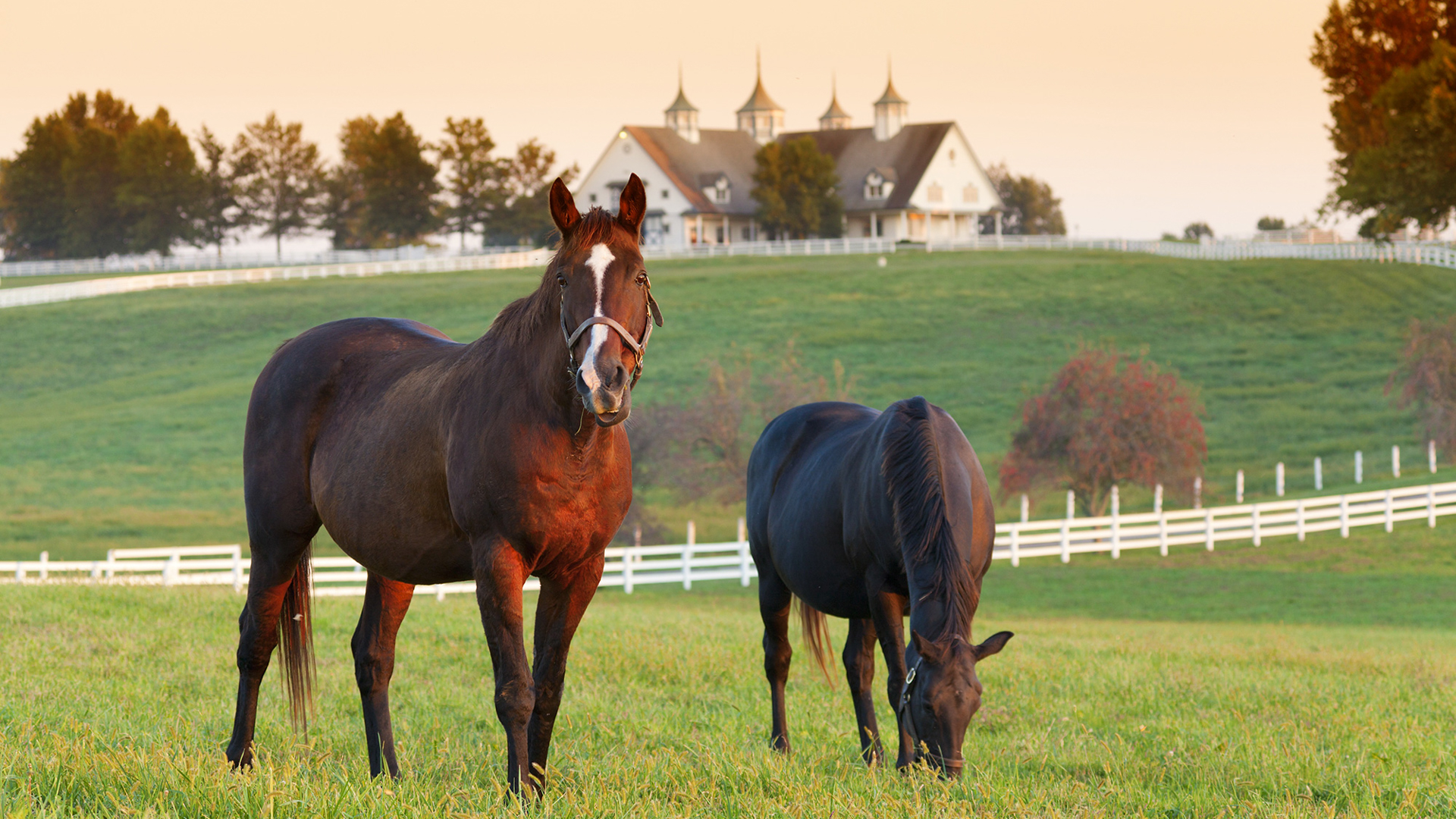
How To Feed Multiple Horses Hay: The Advantages of a Slow Feeder
Wanting to ensure that every single one of your horses is well fed and able to freely graze on fresh, quality hay? A Slow Feeder allows multiple horses to eat hay simultaneously. Here are several advantages to a slow feeder from Farmco.
- Customizable – Choose your trough size and from our selection of custom add-ons.
- Polyester Webbing – On our HF Series Slow Feeder and 45H feeder, we add a net panel that lays across the bale of hay to encourage slower eating behavior (optional for the 45H feeder). Because of the polyester’s durable quality, you will not have to worry about constantly replacing the netting on your slow feeder.
- Healthy Feeding – Your horses will be able to eat the recommended 1.5 pounds of hay each hour, thanks to the 2.5 inch openings on the hay net. This allows 24/7 “slow-feed” hay access for your horse, simulating natural grazing habits.
- Horse Safety – We think that metal slow feeder paneling poses a threat to a horse’s dental well-being. That’s why we use a polyester net panel instead. While your horse munches on hay, their mouth and gums will be protected from the dangerous wear and tear of metal paneling.
- Multiple Horse Feedings – Our HF Slow Feeders allow up to 10 horses to easily feed off of a large round bale at once.
- Great Drainage – With a total of eight drainage holes, excess moisture will be able to drain out effectively, reducing the amount of mold exposure.





